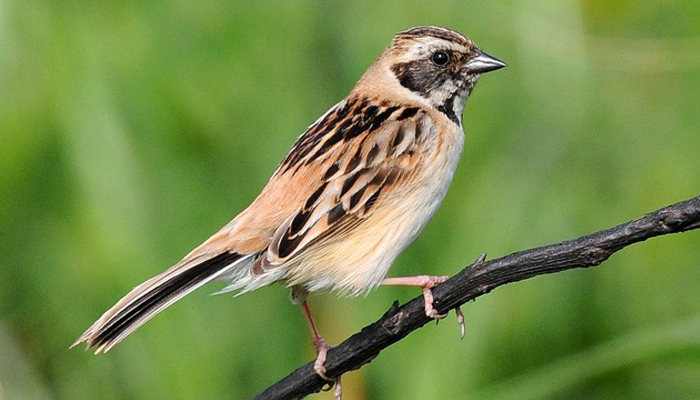
English: Ochre-rumped
Bunting, Japanese Reed Bunting
Russian: Рыжешейная овсянка
Mongolian: Наран хөмрөг
German: Mandschurenammer
French: Bruant de Yeso
Japanese: コジュリン (Ko-jurin)
Status: Rare species. According to the IUCN Red List categories and
criteria, the species evaluated as-Near threatened.
Distribution and Range: Breeds in reedy lake shores and river birds of Primorye in extreme
south east of the Russian Federation, north eastern region of China, Korea and
Japan.Winters in the southern China. In Mongolia: Khalkh river valley, Tashgain
Tavan Nuur Lake surrounding areas. Also nests in Guu ad Azarga River valley.
During migration the species passes though the Khalkh, Nomrog river valley, Khyangany
range.
Habitat: Reed beds and edges of marshes along rivers and lakes, but in
highlands also in wet meadows and drier grasslands. It winters in coastal
marshes.
Population and Threats: Population not assessed. Predators prey on the species during
breeding and migration equally.
Conservation Measures: Listed as Rare animal in the Annex to the Mongolian Government Resolution
#7 (2012) and the Asia Red Data Book for Birds (2001). Distribution area is
partially included within the included within the NSPAN.
Further actions: Improve the conservation measures for waterfowl and endangered
birds, monitor the species reproductive biology aspects, migration path and
threats impacts; protect parts of the Tashgain Tavan Nuur lake within the
NSPAN.